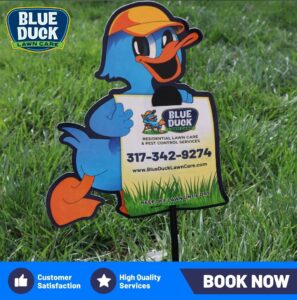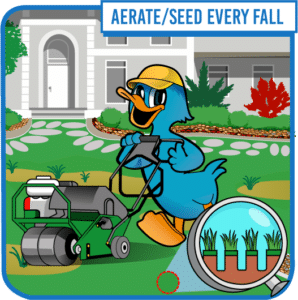Spring Aeration and Seeding is Not Ideal for Your Certified Lawn

The Challenges of Spring Aeration and Seeding for a Certified Lawn
1. Weed Competition
Spring ushers in peak growth periods for weeds, which can be particularly challenging for a lawn. When you aerate and seed your lawn during this season, you inadvertently provide weeds with a perfect environment to thrive. The gaps created by aeration create a fertile bed for weed seeds to settle and sprout alongside your new grass, which can hinder the development of your lawn by consuming essential nutrients and sunlight.2. Temperature Fluctuations
For those managing a certified lawn in Greenwood, Franklin, and Bargersville, spring weather can be unpredictable. Temperature swings and occasional frost can adversely affect seed germination and the initial growth stages of your lawn. These young grasses might not establish well before the onset of the intense summer heat, compromising the health of your certified lawn.3. Increased Disease Susceptibility
The moist conditions of spring, combined with moderate temperatures, are ideal for fungal diseases, which pose a significant threat to a lawn. Diseases such as leaf spot and snow mold are more prevalent in spring-seeded lawns. These diseases not only stress your certified lawn but can also lead to extensive damage, requiring further treatment and detracting from the overall health of your lawn.
The Benefits of Fall Aeration and Seeding for a Certified Lawn
1. Optimal Growing Conditions
Fall is arguably the best season to aerate and seed your certified lawn, particularly in the Midwest. The cooler temperatures and consistent moisture levels help new seeds to establish without the extreme summer heat or potential early frosts of spring, making it ideal for a lawn. This period also experiences fewer weeds, which reduces competition and allows your certified lawn to grow thicker and stronger.2. Stronger Root Development
Fall aeration and seeding take full advantage of the natural growth cycles of cool-season grasses, commonly found in certified lawns in Indiana. This timing helps improve soil drainage and reduce compaction from summer use, allowing deeper root growth for your lawn. A stronger root system developed in the fall makes a lawn more resilient to heat and drought conditions in the subsequent summer.3. Preparing for Winter
A robust growth phase in fall ensures that your lawn is well-prepared to withstand the winter months. With a strong root system and denser foliage, your certified lawn is better equipped to store nutrients and moisture, crucial for surviving the cold season. This preparation results in a more lush and vibrant certified lawn when spring arrives, setting a healthier baseline for the new year.Blue Duck Lawn Care’s Expertise in Certified Lawn Care
At Blue Duck Lawn Care, our certified lawn care professionals are experts in the specific needs of lawns in Greenwood, Franklin, and Bargersville. We leverage our knowledge of local climate and soil conditions to provide tailored care that meets the unique demands of your certified lawn. By choosing the optimal times for aeration and seeding, we ensure that your lawn is not just maintained but thrives.While spring might seem like a good time for lawn maintenance, the advantages of waiting until fall for aeration and seeding are significantly greater, especially for a lawn in Greenwood, Franklin, and Bargersville. This approach aligns with the natural growth cycles of your lawn, reduces the risk of weed competition and disease, and prepares your lawn to be lush and healthy for the following year.
For more information on maintaining your lawn or to schedule a consultation, contact Blue Duck Lawn Care today. Let us help you achieve the Happy Lawn you’ve always wanted – a lush, healthy, and sustainable part of your home.